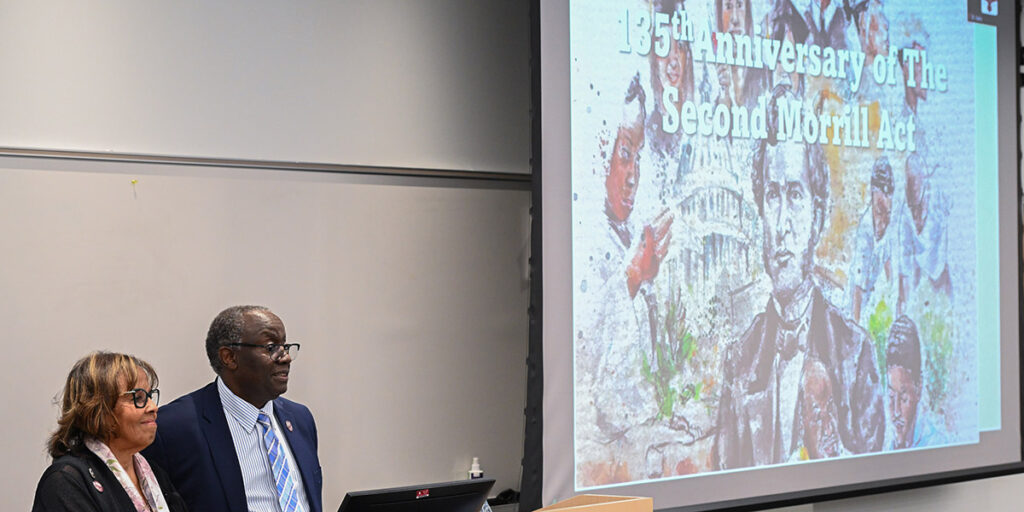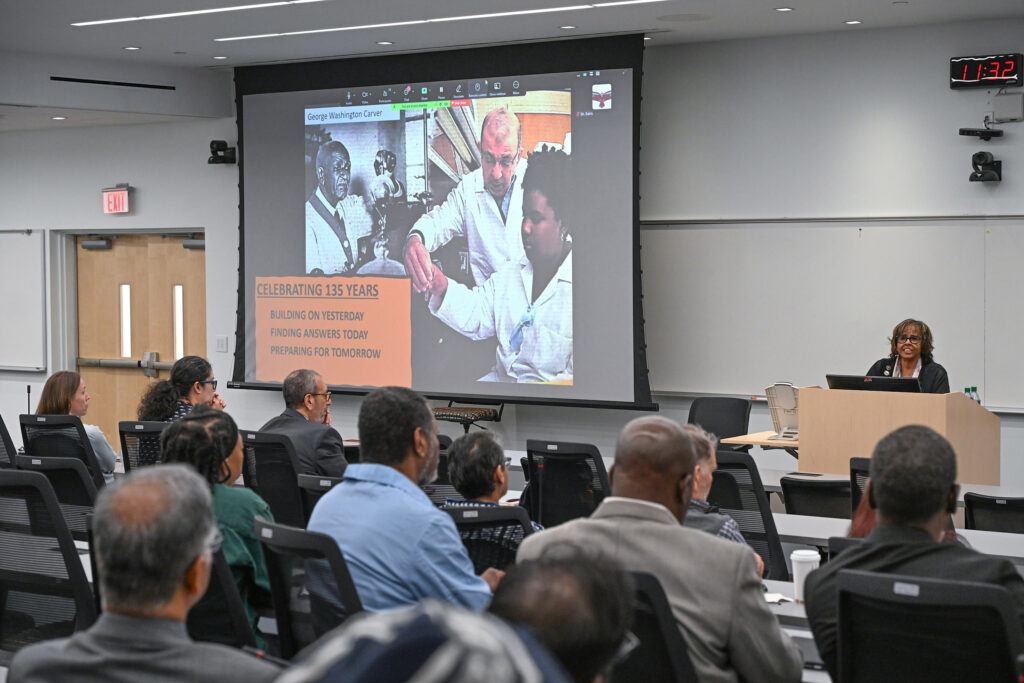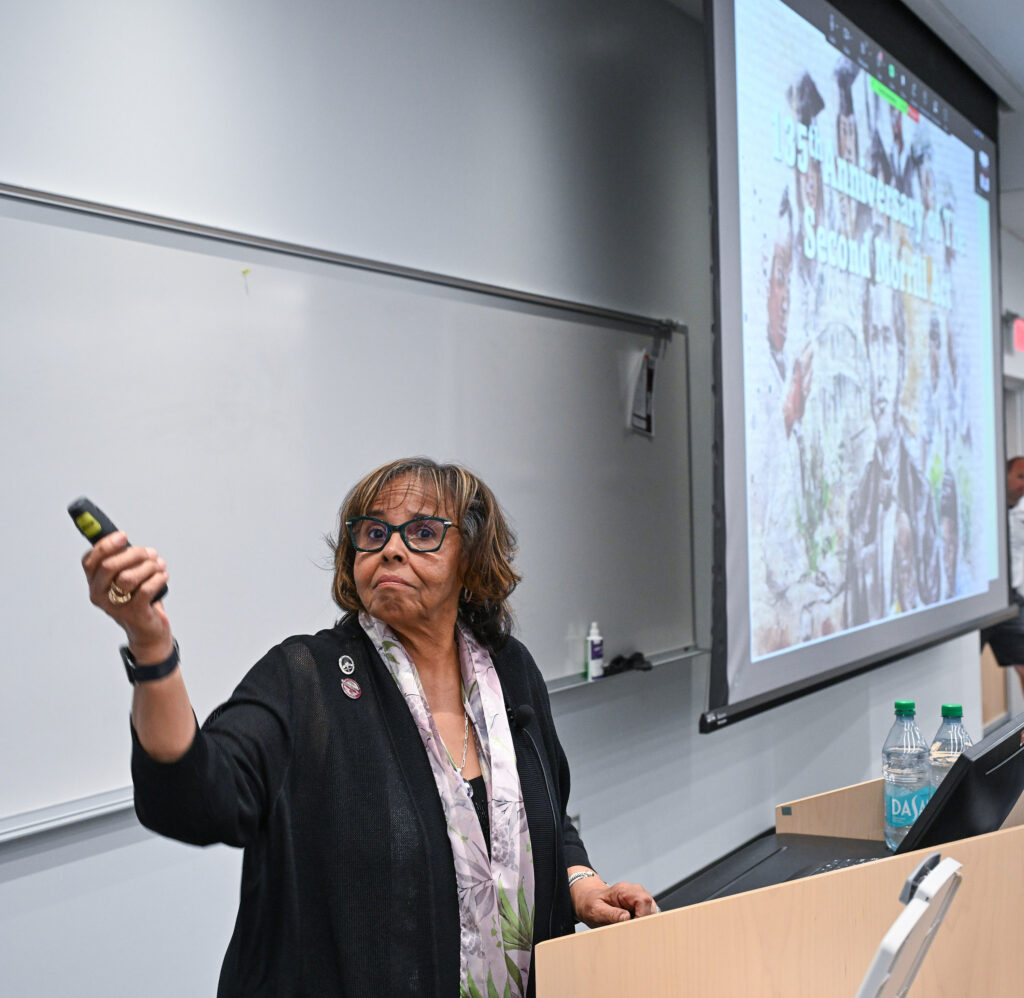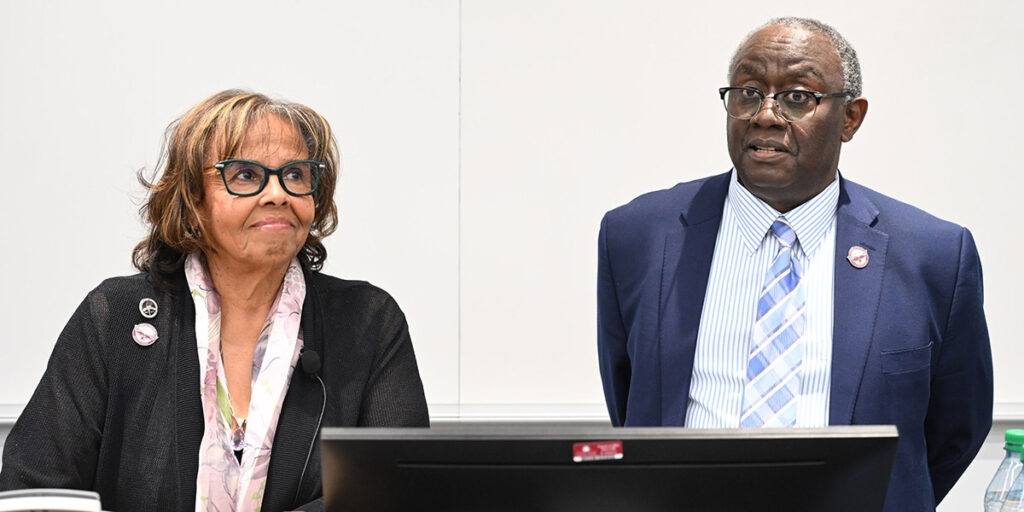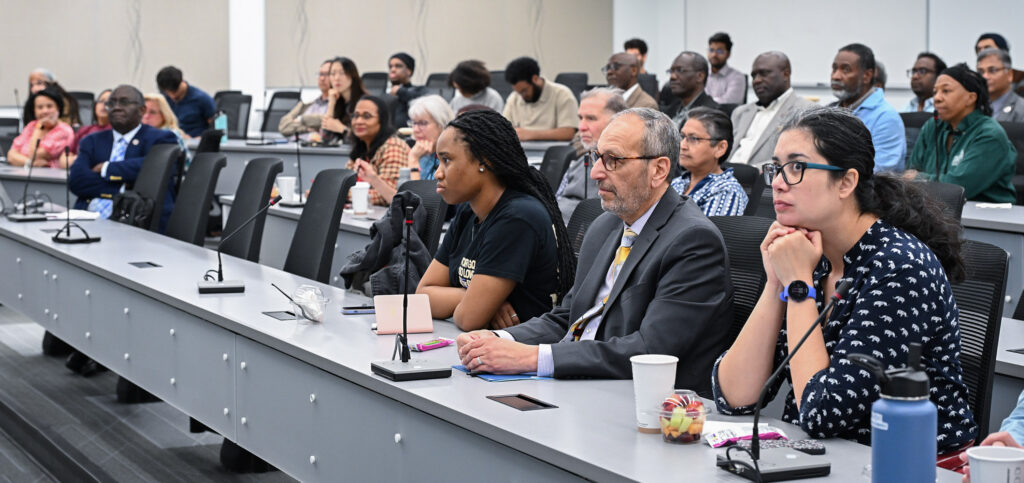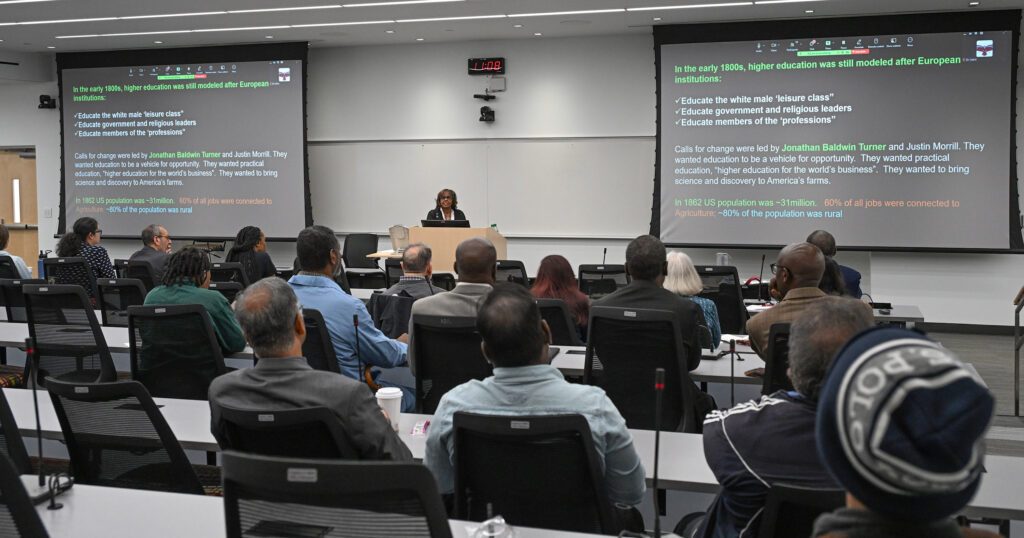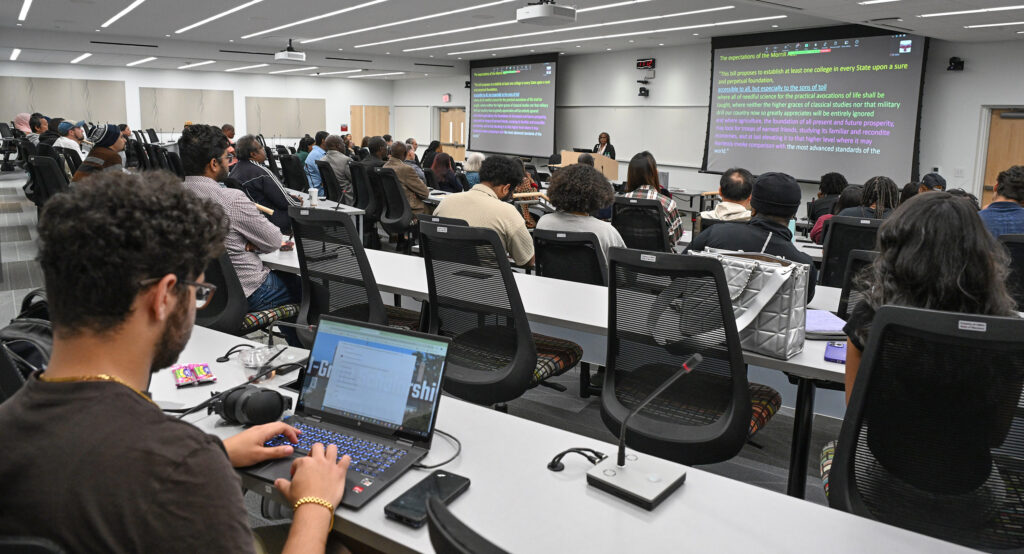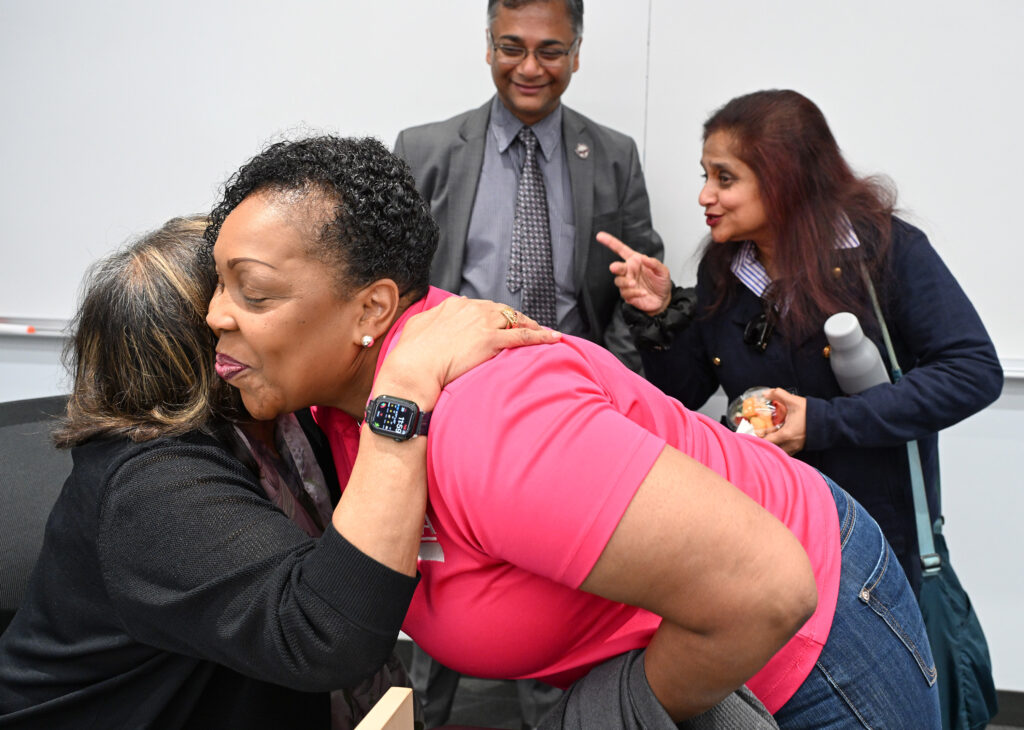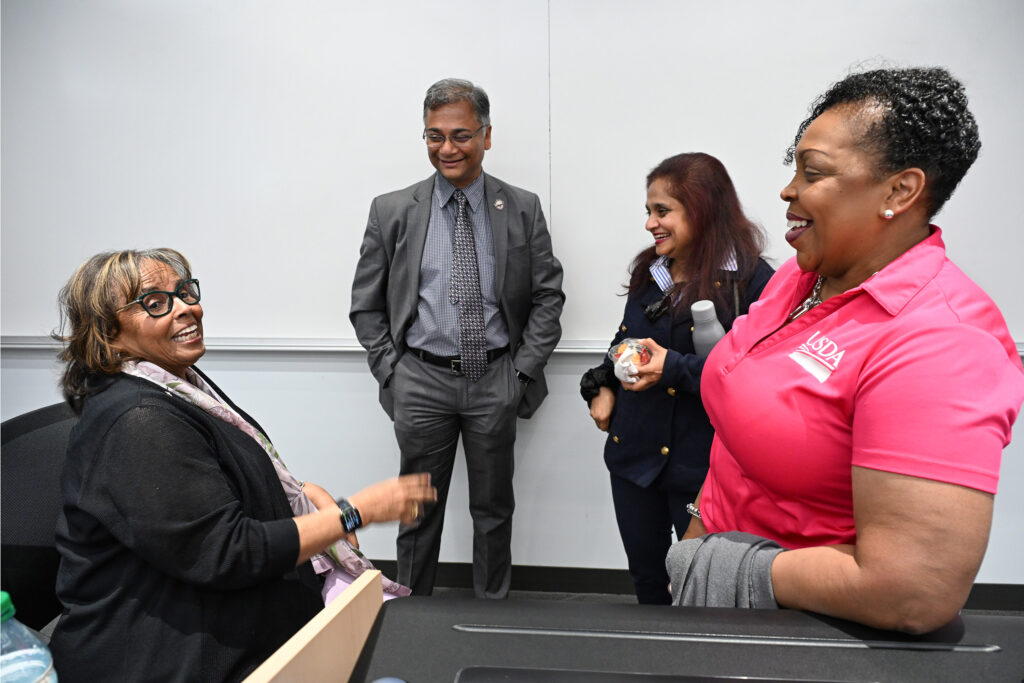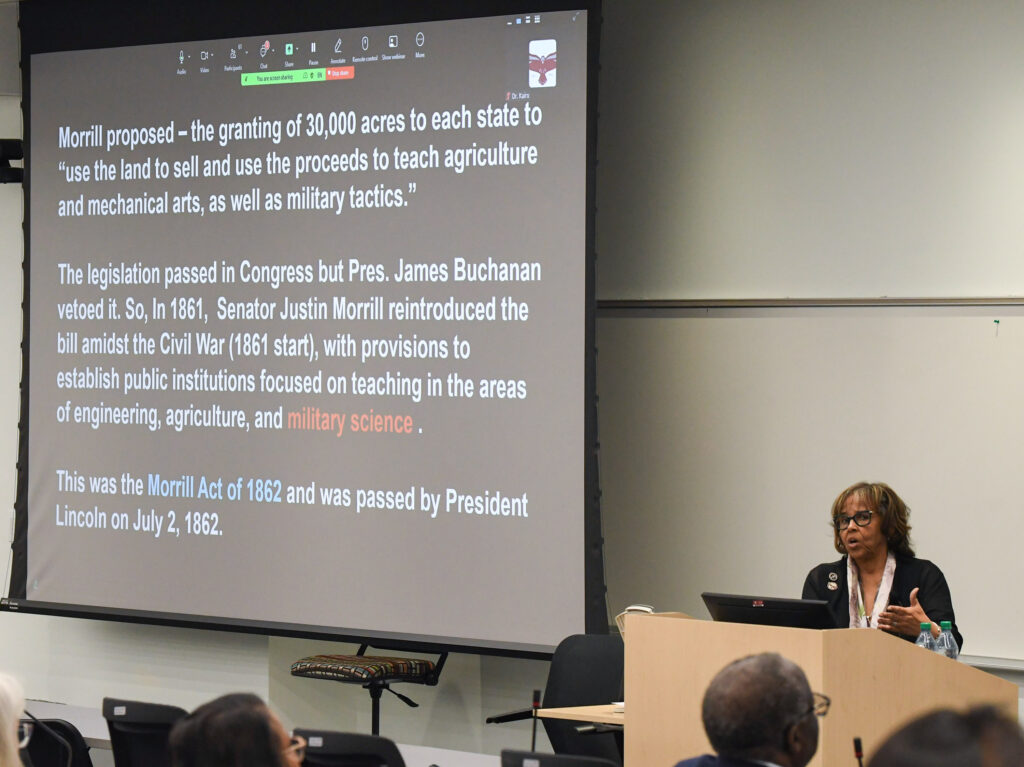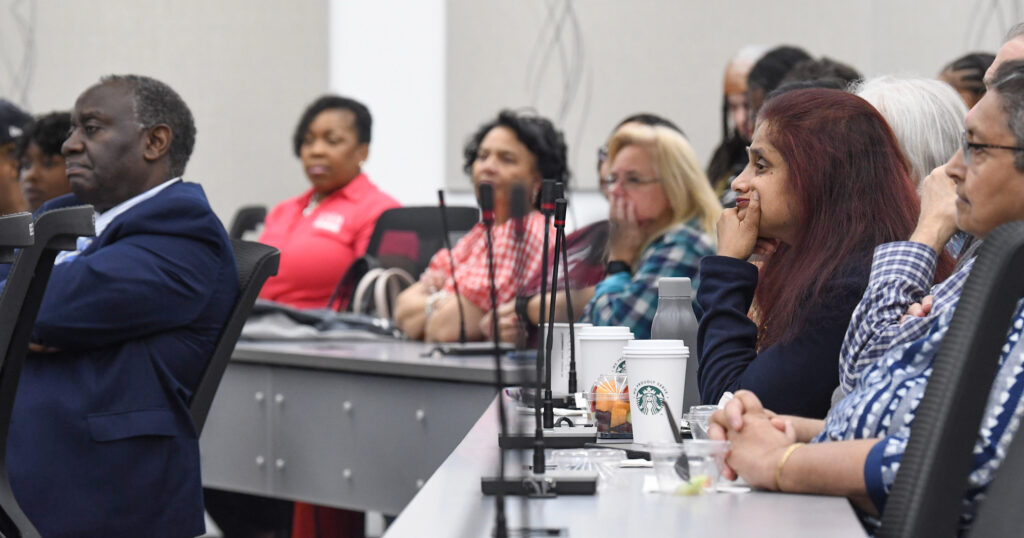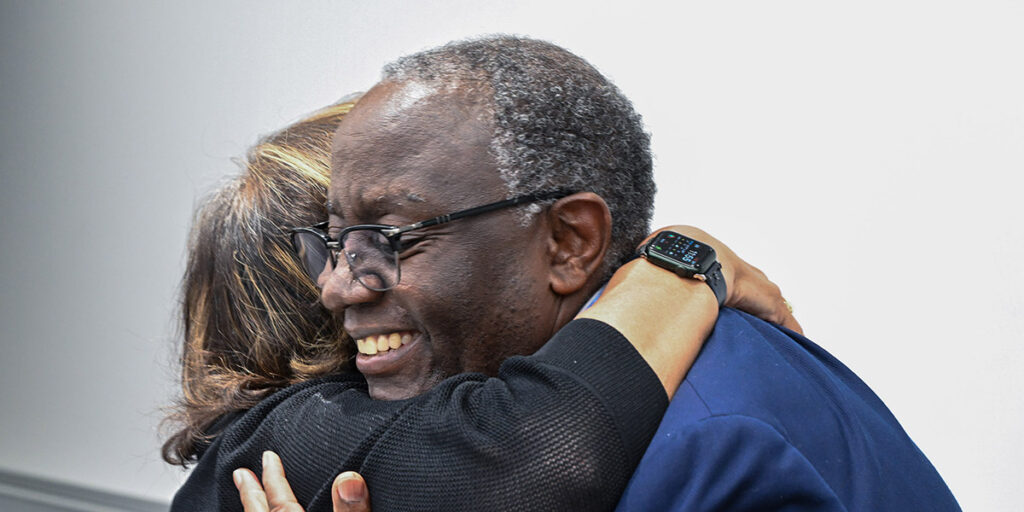SANS Seminar Series
Spring 2025 SANS Seminar Series
Harvard geneticist to focus on gene transfer and animal evolution
The SANS Spring Seminar by Harvard Professor Dr. Cassandra Extavour on May 1 has been canceled. It will be rescheduled at a later date.

A Harvard professor, geneticist and researcher is the speaker May 1 at the final School of Agricultural and Natural Sciences’ Spring Seminar Series for 2025.
Dr. Cassandra Extavour is the Timken Professor of Organismic and Evolutionary Biology and of Molecular and Cellular Biology at Harvard and a Howard Hughes Medical Institute Investigator.
Her presentation is titled “”Alien Invasion: New Genes and New Biology Generated by Sequence Transfer Across Kingdoms of Life.”
The seminar will be held at 11 a.m. in the Carver Hall Auditorium on the University of Maryland Eastern Shore campus.
Extavour’s research is focused on understanding early embryonic development, the genes that control this development, the evolutionary origins of these genes and how their functions have changed over evolutionary time.
Animals are capable of an astonishing array of complex biology that appears absent in single-celled organisms. Evolving these biological properties (including physiology, development and behavior) was possible largely thanks to the emergence of new gene regulatory networks.
Where did the genes in these networks come from? Some of them were present in the single-celled eukaryotic ancestors of animals but others appear entirely novel, with no closely related genes found in other animals.
Researchers have found evidence for a surprisingly widespread phenomenon whereby new genes are created by fusing fragments of bacterial and eukaryotic genes together, generating novel chimeric genes in the genomes of a broad range of complex organisms.
Applying developmental, biochemical and computational assays to one of these chimeric genes provided evidence that it came to occupy a new role in insect reproduction, changing the way that many insects ensure they can make eggs and sperm.
Looking closely into some animals with a surprising number of chimeric genes in their genomes revealed another striking mechanism of genetic novelty. We discovered that up to 11% of the protein-coding genes in a fungus gnat (Bradysia coprophila) were likely acquired by horizontal transfer from distantly related arthropods.
Synteny, sequence composition, structural prediction, gene expression, and phylostratigraphy data suggest that these genes were acquired early in the evolutionary history of these animals, and equip them with new physiological abilities, including withstanding high levels of DNA damage and digesting nutrients found in their ecological niche.
This work enhances our understanding of how gene transfer within and between kingdoms of life contributed to the evolution of animal complexity.
Extavour is a native of Toronto, Canada and obtained her bachelor’s degree in molecular genetics and molecular biology at the University of Toronto. She obtained her Ph.D. at the Severo Ochoa Center for Molecular Biology at the Autonomous University of Madrid in Spain.
After postdoc work at the Institute for Molecular Biology and Biotechnology in Crete, Greece, and at the University of Cambridge, she established her independent laboratory as an assistant professor at Harvard.
Former SANS dean celebrates the law that shaped UMES, HBCUs
Dr. Carolyn B. Brooks, UMES Faculty Member Emerita and former dean of the School of Agricultural and Natural Sciences, talks about “135 Years of the Second Morrill Act: Shaping Land-grant Universities and HBCUs” at the SANS Spring Seminar on April 29. Photos by Todd Dudek/UMES Ag Communications
Past Seminars
| Date | Speaker | Topic | |
|---|---|---|---|
| Feb. 13, 2025 | Dr. Dia-Eldin A. Elnaiem, University of Maryland Eastern Shore | Moon Talk: The Impact of Lunar Cycle on the Nocturnal Activity Rhythm of an Insect Vector of a Killing Disease. | |
| Feb. 27, 2025 | Dr. Suprakash Sinha Ray, Centre for Nanostructures and Advanced Materials, Council for Scientific and Industrial Research, Pretoria, South Africa | PLA-based Bioplastics for a Circular Plastic Economy: Advantages and Challenges. | |
| March 6, 2025 | Terrence Frett, Lead Plant Breeder, Wish Farms of Florida | Berry, Berry Tasty! Breeding berries and small fruit for Improved flavor and disease resistance. | |
| March 13, 2025 | Dr. Michelle Spencer, University of Maryland Eastern Shore | Adult Learning Theory and the Non-traditional Student. | |
| April 10, 2025 | Dr. Ayobami Ogunmolasuyi, Bain & Co. | Navigating Success: From UMES to the Ivy League and Beyond into Consulting. | |
| April 15, 2025 | Dr. Aleaya Bowie, University of Maryland, College Park | From Student to Veterinarian: The Power of Mentorship, Networking and Keeping an Open Mind. | |
| April 29, 2025 | Dr. Carolyn Brooks, UMES Faculty Member Emerita and former dean of School of Agricultural and Natural Sciences | 135 Years of the Second Morrill Act: Shaping Land-grant Universities and HBCUs. |
| Date | Speaker | Topic | |
|---|---|---|---|
| Nov. 14, 2024 | Dr. Salem Al Mosleh, University of Maryland Eastern Shore | Getting in Shape: From Beaks to Batteries | |
| Oct. 24, 2024 | Dr. Samira Musah, Duke University | Uncovering Human Disease Mysteries with Stem Cell and Organ Chip Models | |
| Oct. 17, 2024 | Dr. Indranath Chaudhuri, St. Xavier’s College, Kolkata, India | Pattern Formation in Nature | |
| Oct. 10, 2024 | Dr. Stephen Tomasetti, University of Maryland Eastern Shore | Shellfish Stories | |
| Oct. 3, 2024 | Dr. Yvon Woappi, Columbia University | Developing High-Throughput Wound Organoids for Human-relevant Injury Modeling | |
| Sept. 12, 2024 | Dr. Anil N. Netravali, Cornell University | Advanced Green Composites | |
| May 9, 2024 | Dr. Jonica Thompson, USDA’s Animal and Plant Health Inspection Service | Common Poultry Diseases on the Eastern Shore | |
| May 2, 2024 | Margaret “Marnie” Pepper, USDA APHIS | Understanding and Managing Wildlife Conflicts | |
| April 11, 2024 | Margaret Zeigler, Inter-American Institute for Cooperation on Agriculture | Feeding the Americas and the World: Bridges for Agricultural Cooperation | |
Feb. 15, 2024 | Dr. Habilou Ouro-Koura, Pacific Northwest National Laboratory | From Student Lab to National Research Lab | |
| Feb. 22, 2024 | Dr. Aaron Persad, UMES Engineering Dept. | Space Food to Space Suit | |
| Mar. 7, 2024 | Dr. Birendra Adhikari, Idaho National Laboratory | Membrane Separation: Technology Needed to Reach Net-Zero | |
| Mar. 14, 2024 | Dr. Naveen Dixit, UMES SANS | UMES Horticulture: Advancements in Teaching, Research and Extension |
| Date | Speaker | Topic | |
|---|---|---|---|
| March 15, 2023 | Dr. Deborah Sauder | First Measurement of Ambient Air Quality on the Rural Lower Eastern Shore | |
| April 5, 2023 | Dr. Jimmy W. Smith | Opportunities and Challenges in International Agriculture Development | |
| April 19, 2023 | Dr. Charles R. Powley | Challenges in the Analysis of PFAS in the Environment | |
| April 27, 2023 | Dr. L. Mahadevan | Magic, Mystery, and Mathematics in the Mundane | |
| Sept. 13, 2023 | Dr. Richard Kane | Exploring the Synthesis and Energy Storage Applications of Graphene | |
| Sept. 20, 2023 | Dr. Catherine A. Richter | Molecular biology in environmental science: Discovery of de novo thiaminase synthesis in fish, and defining the range of a rare and cryptic fish with environmental DNA | |
| Sept. 27, 2023 | Dr. Kausiksankar Das, SANS, UMES | Technology in the classroom (virtual reality and cellphone) | |
| Oct. 11, 2023 | Ray Baughman, University of Texas at Dallas | Give it a twist: How artificial muscles harvest mechanical energy | |
| Oct. 25, 2023 | Dr. Malinda Cecil, UMES | A Food Culture Tour of the Republic of Ireland and the Challenges of Food Sustainability | |
| Nov. 8, 2023 | Trevor Michaels, USDA’s Animal and Plant Health Inspection Service | How conservation detection dogs are used for wildlife management | |
| Nov. 29, 2023 | Dr. Melissa A. Cregger, Oak Ridge National Laboratory | How harnessing plant-microbe interactions builds sustainable ecosystems. | |
| Dec. 6, 2023 | Dr. Carrie A.M. Laboski, USDA-ARS Pasture Systems and Watershed Management Research Unit in University Park, PA. | Sustainable Nitrogen Fertilizer Rate Decisions Tools for Corn Production: A Midwestern Approach |

